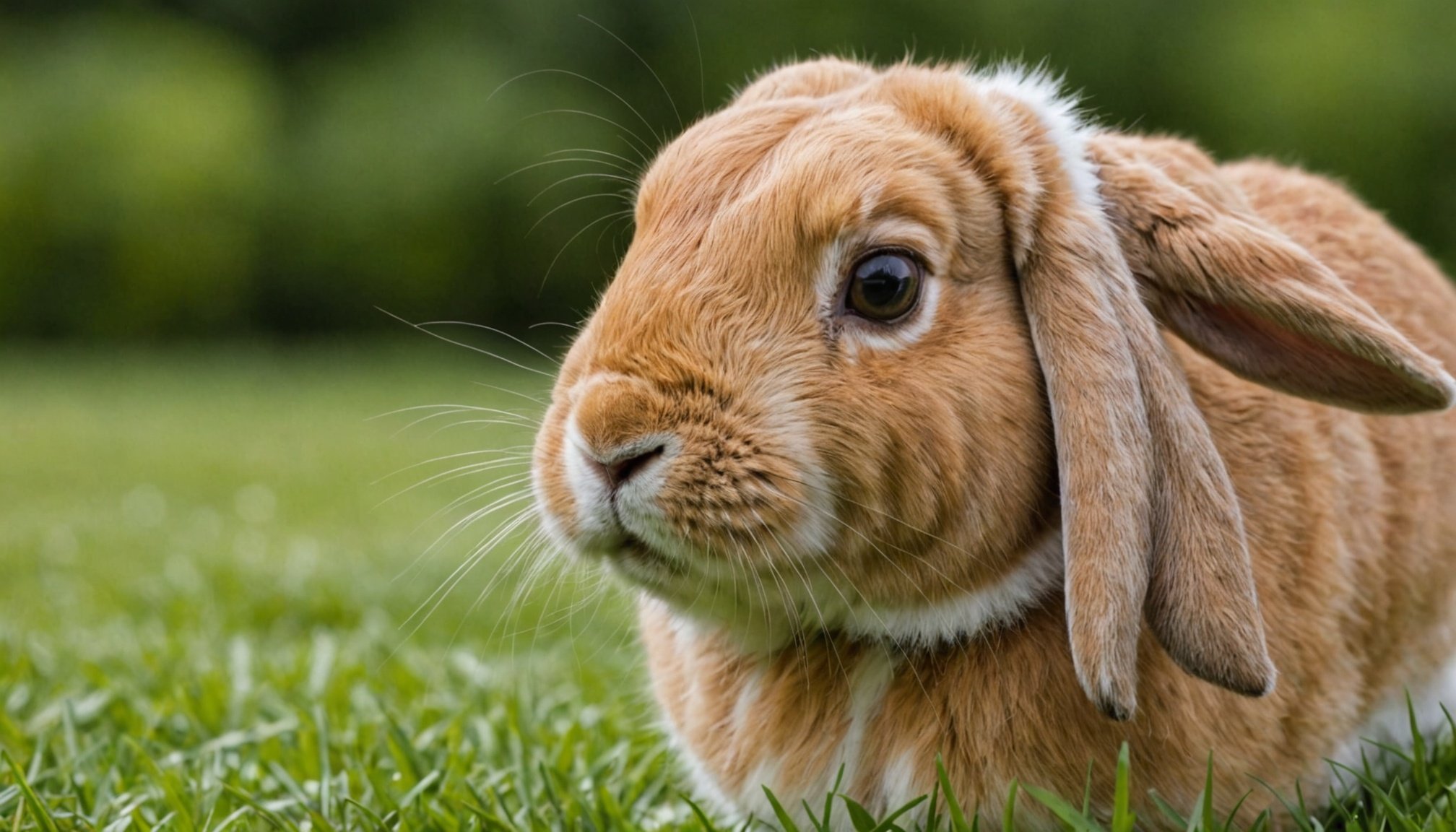Common Skin Problems in Pet Rabbits
Pet rabbits frequently encounter skin problems that can impact their overall health. Understanding these common issues is crucial for ensuring your rabbit leads a comfortable life. Rabbit owners should be aware of signs such as alopecia, mites, and dermatitis.
One of the most prevalent rabbit health issues is ear mites. These microscopic parasites can cause irritation and inflammation, leading to excessive scratching and ear discharge. In addition, rabbits may experience dermal mites, such as Cheyletiella, sometimes known as “walking dandruff,” which causes flaky skin and hair loss.
Also read : What should you consider when choosing a diet for your pet tortoise?
Skin problems in rabbits might also manifest as moist dermatitis, often resulting from drooling or a perpetually wet environment. This condition can lead to a bacterial infection if left untreated. Similarly, pododermatitis, or sore hocks, is a painful ailment caused by inappropriate flooring that irritates and damages the rabbit’s footpads.
Key symptoms to monitor in your rabbit’s skin health include redness, swelling, shedding, and behavioural changes such as irritability or refusal to be handled. Early detection and promptly addressing these signs are crucial. Identifying and treating these issues, whether through environmental changes or medical intervention, can significantly improve your rabbit’s health and comfort.
Also to read : Unlocking innovative solutions for managing chronic kidney disease in aging cats
Identifying Symptoms of Skin Issues
Recognising rabbit skin symptoms is paramount in maintaining your pet’s health. Key visual indicators such as redness, swelling, and shedding can signal underlying skin problems. These symptoms often alert owners to issues needing addressing. Behavioural changes might also reveal discomfort: your rabbit may become irritable, refuse handling, or lose interest in grooming.
Regular inspections using a visual checklist can help identify these problems early on. Ensure to look for signs of flaky skin, excess scratching, or unusual patches of fur when handling your rabbit. A proactive approach can aid in diagnosing skin problems promptly.
Utilising a guide to skin problem identification allows owners to understand the nuances of specific symptoms. Photographs of potential issues might improve your ability to differentiate between common ailments like dermatitis or mites. This understanding ensures that necessary steps, whether medical or environmental adjustments, can be taken swiftly.
Staying attentive to subtle clues in your rabbit’s behaviour or appearance empowers you to protect its overall wellbeing. Knowing the signs of skin issues not only facilitates early intervention, but also enhances the quality of life for your furry companion.
Causes of Skin Problems in Rabbits
Rabbit skin causes often stem from a blend of environmental and diet-related factors. For instance, a habitat with poor hygiene can foster parasitic infestations, such as mites and fleas, leading to severe skin irritation. A dirty living condition is a significant risk factor, as it amplifies the possibility of parasitic transmission.
Dietary factors also play a role in the skin’s health. A lack of essential nutrients can weaken the rabbit’s immune response, making it more susceptible to infections and skin disorders. Maintaining a balanced diet with adequate vitamins and minerals boosts skin health significantly.
Stress and improper living conditions can deteriorate the rabbit’s skin integrity. A stressed rabbit is likely to develop unwanted habits such as excessive grooming or scratching, exacerbating existing skin conditions or causing new irritations.
Finally, infections caused by bacteria or fungi contribute notably to skin problems. These organisms can thrive in damp or humid environments, leading to conditions like ringworm. Comprehensive care in addressing these environmental and health risk factors is crucial, ensuring your pet’s welfare and preventing serious complications.
Effective Treatment Options
Addressing rabbit skin health involves understanding both conventional and home-based remedies. Medical treatments often include topical applications and oral medications prescribed by a veterinarian to tackle issues like parasites, bacteria, and fungus. Veterinary assistance is crucial when infections or severe infestations occur, as incorrect treatment can exacerbate health issues.
For minor skin problems in rabbits, owners may explore natural remedies. Ingredients such as aloe vera and diluted apple cider vinegar can soothe irritated skin. However, caution is advised to prevent ingestion, which might harm the rabbit. Regular observation is essential to gauge the effectiveness of these treatments.
Skin treatment solutions often involve environmental adjustments. Clean bedding and proper ventilation help reduce the risk of further aggravation. Moreover, ensuring that rabbits remain dry and in clean surroundings limits fungal and bacterial growth.
Knowing when to opt for professional help is just as vital as trying home remedies. Rabbit health professionals can provide accurate diagnoses and tailored treatment plans. Recognising when a problem is beyond home treatment, such as persistent redness or swelling, can prevent more serious health complications. Building rapport with a veterinarian is beneficial for ongoing rabbit care and early intervention strategies.
Preventive Measures for Skin Care
Ensuring rabbit skin care is both preventive and proactive is essential to avoid future issues. Regular grooming is fundamental, not just for maintaining appearance but for promoting skin health. By brushing your rabbit frequently, especially during shedding seasons, you can prevent matting and identify any early signs of skin problems.
A balanced diet also plays a crucial role in preserving skin integrity. Rabbits require a diet rich in fibers, with ample fresh hay and vegetables, to maintain optimal health. Supplements with vitamins and omega fatty acids can further enhance skin condition, supporting the robustness of the skin and fur.
The environment your rabbit inhabits significantly impacts their skin health. Ensure their living space is clean and well-ventilated to deter the growth of bacteria and fungus. Quality bedding that absorbs moisture also helps in preventing conditions like moist dermatitis.
To foster a healthy living environment, consider the following steps:
- Maintain regular cleaning schedules.
- Use non-abrasive bedding materials.
- Ensure sufficient space for movement and ventilation.
By embracing these preventive measures, you enhance the quality of life for your rabbit, reducing the risk of skin issues and encouraging overall wellbeing. Consistent attention to grooming, diet, and habitat creates an optimal foundation for your rabbit’s health.
Visual Aids and Additional Resources
Enhancing rabbit health management through visual guides and resources can tremendously aid owners in understanding and addressing their pets’ skin care needs. Infographics, as a tool, can summarize complex symptoms, from identifying abnormalities like redness or shedding to recommending specific treatments. These visual aids provide an at-a-glance reference for both new and seasoned rabbit enthusiasts, making it easier to pinpoint potential issues.
For those keen on broadening their knowledge, there are numerous rabbit skin care resources available. Books, online forums, and veterinary websites offer valuable insights into maintaining a rabbit’s well-being. Such resources often include comprehensive guides, covering everything from skin problem identification to preventive care measures.
Creating a checklist for regular skin inspection is advantageous. It could encompass reminders, such as checking for inflamed areas, unusual behaviours, or changes in fur texture. Employing these aids ensures that owners can keep track of their rabbit’s overall condition easily.
These resources not only emphasize the importance of sustained care but also foster confidence in handling various health scenarios. By leveraging these tools, individuals can better support their rabbit’s health, ensuring a happy and healthy pet.
When to Consult a Veterinarian
Deciding when to seek veterinary care for rabbits can greatly influence their health outcomes. Immediate attention is warranted if your rabbit exhibits persistent redness, swelling, or severe shedding, which may indicate significant underlying issues. Unlike minor skin irritations that can often be managed at home, these symptoms suggest the presence of potential infections or parasitic infestations.
Rabbit health professionals are essential in distinguishing between ordinary ailments and more serious conditions. For example, if behavioural changes such as lethargy or a lack of appetite accompany skin issues, professional intervention is advisable. These signs often imply systemic health problems that a veterinarian needs to address to prevent further complications.
Maintaining a strong relationship with a veterinary expert ensures timely advice and care. Regular check-ups allow for the early detection of possible skin and other health issues, ultimately contributing to a better management strategy for your rabbit’s wellbeing. A trusted vet becomes a valuable partner in safeguarding your rabbit’s health, offering guidance on treatment options and preventive measures. Although home care is beneficial, knowing when to reach out for expert help is crucial for ensuring your rabbit remains healthy and content.









